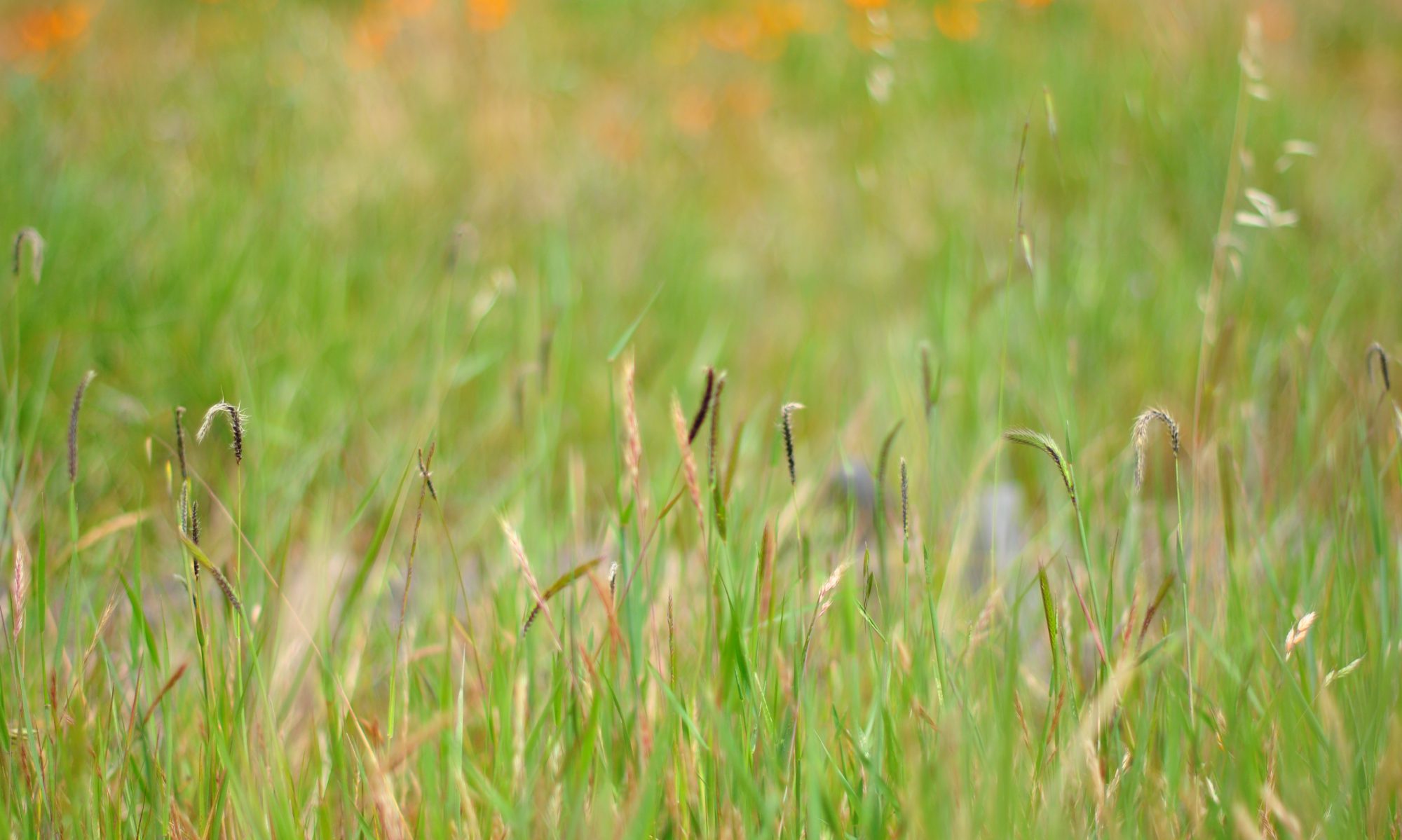This post was originally published on BioDiverse Perspectives – a research blog aimed at fostering communication about biodiversity.
I’m going to start this post by issuing a challenge: Look at the picture above and identify the most abundant organism. Go ahead, I’ll give you a second. Here’s a bigger version of the picture if that one is too small.
Got it?
“Ok,” you’re saying, “either that was too easy or you’re tricking me.”
Here’s what I see when I look at that picture. I see grassland that’s pretty much dominated by a single grassland species. Since I took the picture, I know that the grassland is in California at the Pepperwood Preserve in Santa Rosa. The grassland species is an exotic grass known as Harding grass (Phalaris aquatica). It is thought to be native to Northern Africa and the Middle East, to have been introduced to California a long time ago, and to have been spread throughout Northern California by the Soil Conservation Corps to prevent erosion. Some might call it an invasive species. So is that it? Is Harding grass the most abundant species in the picture?
Maybe. But what if we enhance the picture?
Enhance
Enhance
There’s a fungus growing on the leaves of Harding grass in Santa Rosa. On each leaf are hundreds (thousands?) of individuals of the rust fungus, Puccinia coronata – each one producing a little pustule. And there can be so many of them during some parts of the year that it’s impossible to walk through the grasslands without your clothes getting covered in spores.

And what’s even more interesting about this fungus is that even though it may be the most abundant organism in this grassland, it’s never been documented here. In fact, according to the USDA, Puccinia coronata has never been documented infecting Harding grass outside of its native range.
And it’s not like researchers don’t know anything about Puccinia coronata or Phalarais aquatica. So how come, despite the availability of research preserves with missions to “steward life and landscapes” and “advance science-based conservation of ecosystems,” have we as researchers failed so completely at describing what may be the most abundant species present? Some might argue that ecologists have a history of under-appreciating the importance and abundance of parasites in the natural world. Others might suggest that Harding grass’s native pathogens are only now starting to catch up after its initial introduction into California. One thing is certain – if we want to understand the ecology of the Pepperwood Preserve, we better start getting to know the ecology of this disease.
***************************************************
It was my first field season of graduate school. I was completely overwhelmed and unsure what I wanted to study, when I came face-to-face with the most abundant species at the Pepperwood Preserve. Great! I’ll describe the pathogen and do some experiments. I’ve found a dissertation! Then I got back from the field. A month passed. I found another dissertation topic. The month turned into a semester – three new dissertation topics. The semester turned into a year, and at five or six dissertation topics post-Puccinia, I started to worry that Pepperwood Preserve’s most abundant species* would never be described.
Unsure how to proceed, but certain that we needed to make progress understanding this pathogen, I reached out to some instructors at Santa Rosa Junior College. They put me in touch with some students, and together, we cobbled together “Puccinia coronata Field Crew 1”. In addition to working towards describing the pathogen, PcFC-1 started to notice some patterns of disease across the landscape. They identified a hypothesis, collected data, analyzed it, and reported results. This year, PcFC-2 has not only kept the project going, but is collecting even more data and testing new hypotheses. And PcFC-2 has gone one step further by submitting an abstract to the Ecological Society of America, where they will present their results in the Friday poster session.
So far, here’s what we know about the most abundant species at Pepperwood Preserve: We know what it is – Puccinia coronata. We know that infection severity is heterogeneous across space and time. We know that in 2013, there was no effect of host density on infection severity. Through careful observations and collaborations between knowledgeable landowners, professional ecologists, college faculty, and students, Pepperwood has empowered us to make progress towards addressing some of the problems that plague our field. In doing so, we’re joining the next generation of natural historians in revealing the novel ecological systems that have gone undetected right under our noses.

*ok, so the most abundant question was a trick question. And if we’re going to start getting nitpicky about organisms living on organisms, who is to say that there aren’t microbes invisible to the naked eye that are even more abundant than P. coronata? To that, I say – Yes! I totally agree!




I have been trying to extirpate a few of the exotic grasses on my grasslands, and a pest that attacks another pest is good news, but how narrow are P. coronata’s tastes?
LikeLike
That’s a great question, Earle! Unfortunately, it’s one of the many questions for which we don’t really have an asnswer. Some research has shown that in a lab, the P. coronata from agricultural fields only infects hosts that are closely related to the one the sample is collected from. For Phalaris, that would mean exotics grasses like wild oat, and velvet grass, and natives like Koelaria macrantha.
Along with faculty member Tony Graziani, students at Santa Rosa Junior College have been trying to determine the host range of the P. coronata from the Pepperwood preserve. So hopefully, we will have an answer soon!
LikeLike
Super cool that you got a group of students together to take a closer look at what initially was “just an observation” and that now those students are bringing this research to the larger community!
LikeLike